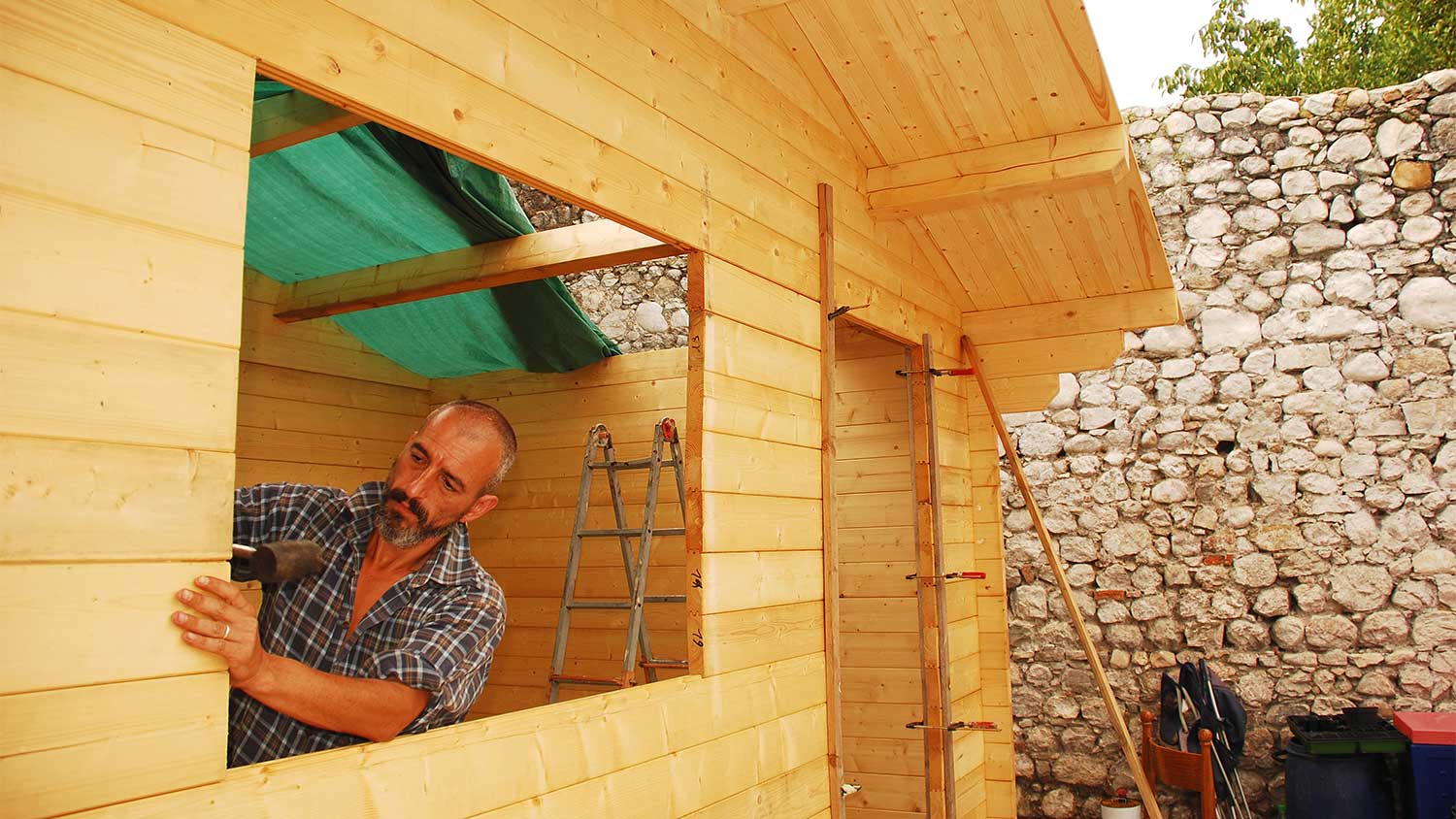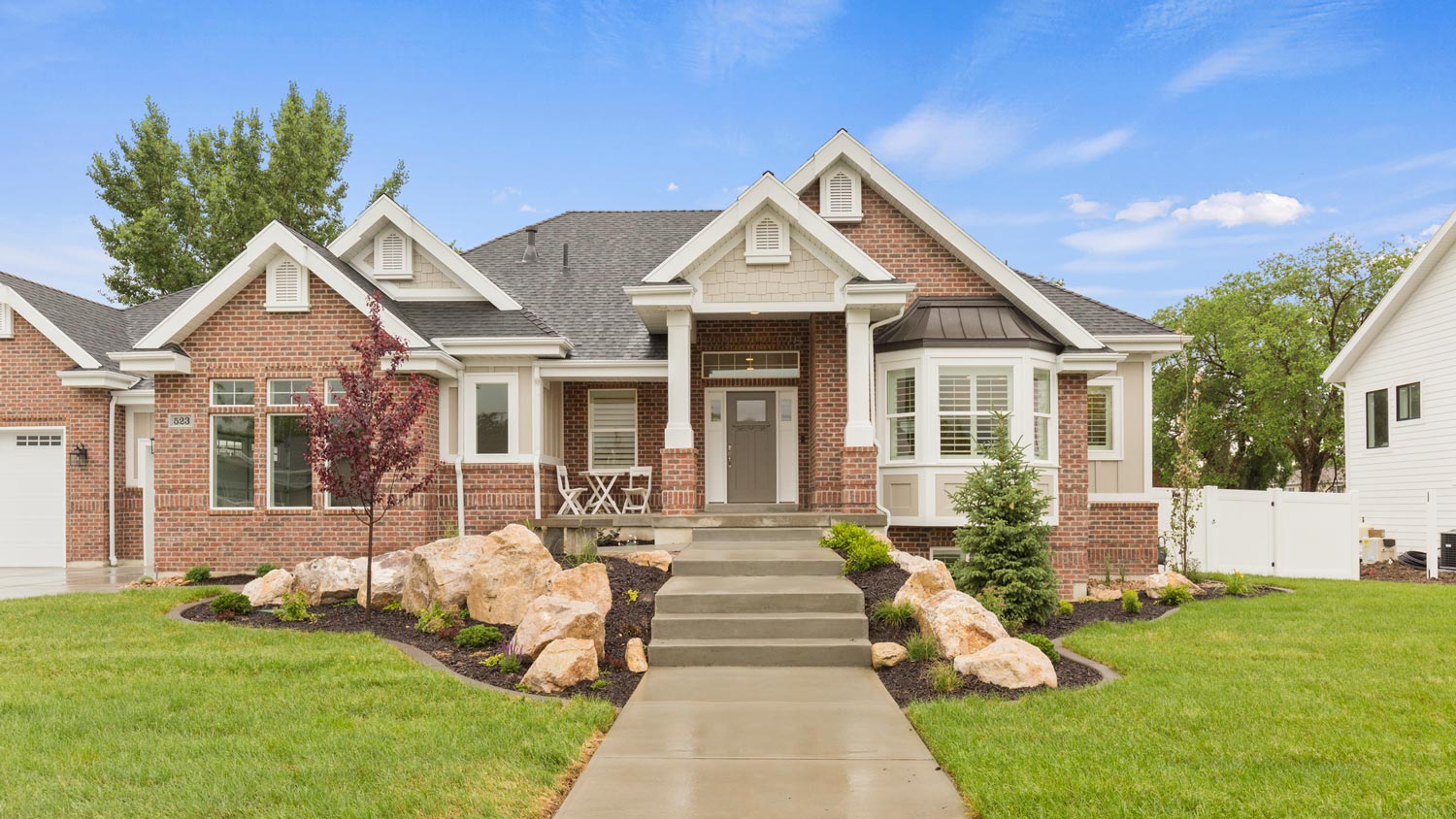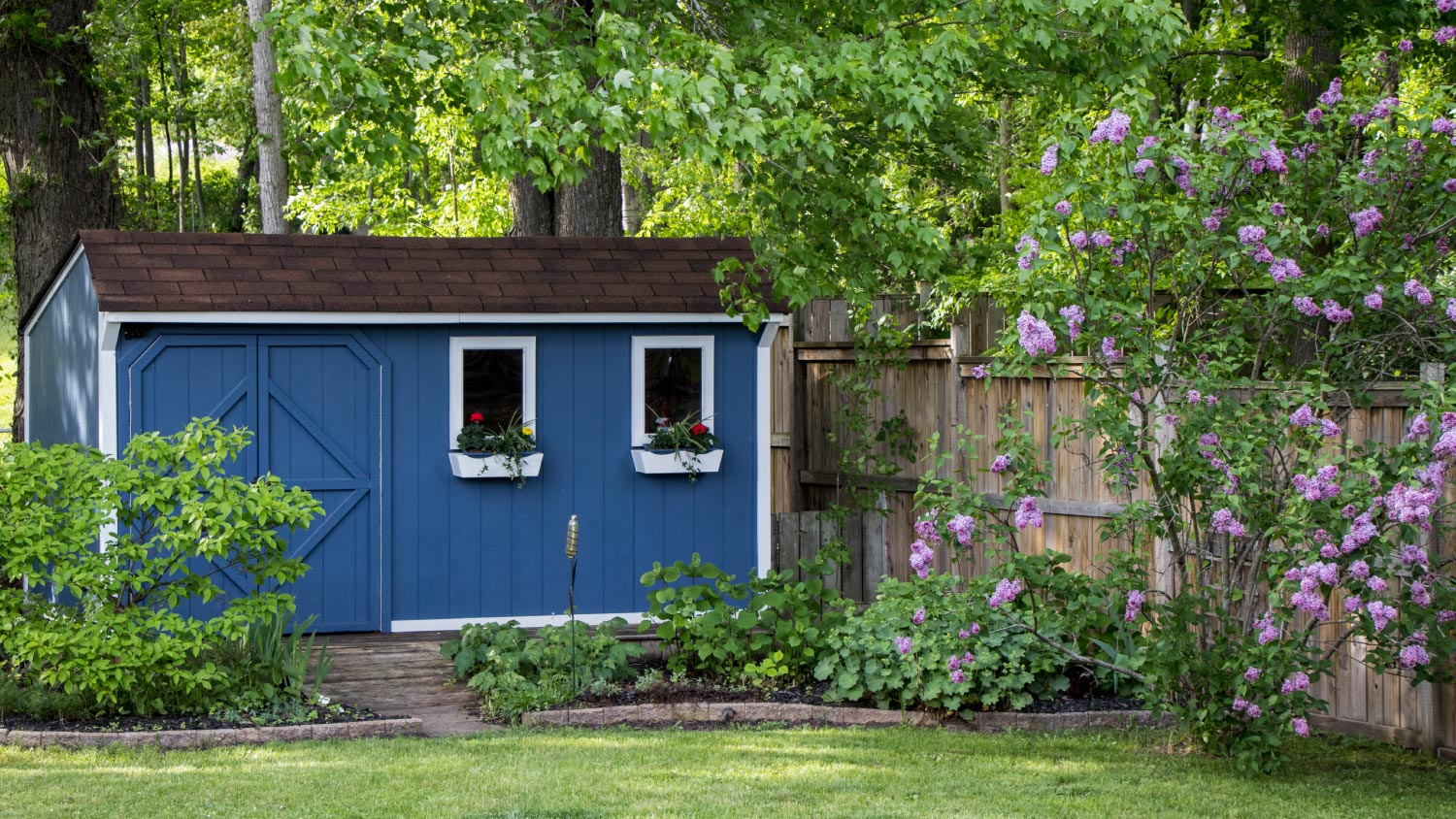
Discover the cost to build a workshop. Learn about price ranges, key cost factors, and ways to save on your new workspace project.
Brick houses are eco-friendly, beautiful, and built to last


A brick exterior is durable, lasts a long time, and is low-maintenance.
The downsides to having a brick home include cost and structural risks.
Brick siding runs around $18,000 for a 2,500 square foot home.
If the big bad wolf couldn’t blow down a brick house, shouldn’t that be the type of home everyone lives in? You might choose vinyl and wood over brick (no straw and sticks here!), but these materials often don’t last as long. From their strength and durability to their varying style options, brick houses offer a lot to boast about. In this article, we’ll weigh the pros and cons of brick houses and lay out a solid foundation of brick house basics to help you choose what’s right for you.
When taking on this project, expect questions only a pro can answer. With our network of local pros, you'll get the job done and your questions answered—without the hassle and stress of doing it yourself.
It’s no secret that brick has been a popular home building material for a long time, and for good reason. Brick homes are eco-friendly, have a long life span, and are low-maintenance, but this masonry material is also expensive to buy or build and has the potential for structural issues, like many other home types.
Also, if you fancy a change of color, it's expensive and challenging to paint brick. Take a look at the key pros and cons of brick homes.
| Pros | Cons |
|---|---|
| Eco-friendly | Expensive |
| Durable | Painting is costly |
| Low-maintenance | Structural concerns |
| Energy-efficient | Limited color choices |
| Fire-resistant | Mortar will need repointing |
| Resistant to weather damage | Temperature fluctuations cause issues |
| Good sound performance | Remodeling is more expensive |

Old-school brick houses are still standing for a reason. They bring a sturdy, eco-friendly material that can often withstand even the harshest winds and flames. Don’t feel as if you’re stuck with the same old red brick exterior, either. Brick colors include reds, browns, grays, and even whites.
Modern brick homes are made of natural and abundant clay and shale. Bricks are also easy to recycle if the house ever needs to be demolished.
If, for example, you decide to tear down a non-load-bearing wall, you can repurpose the bricks to line pathways, build a garden wall, or, at worst, have them broken up and used as sub-base matter.
Bricks are also naturally resistant to mold, rot, and mildew because they can cope with high humidity. They last indefinitely and can be repurposed multiple times. Plus, when they finally degrade or are no longer suitable for repurposing, they won't leach harmful chemicals or microparticles into the environment because they consist of natural materials.
Bricks are among the most energy-efficient building materials, as they have a heat capacity of 0.84 Joules per Kelvin. This helps keep heat out and cool air in.
Compare this to wood, which only has a 0.42 heat capacity, and you see that bricks hold nearly double the amount of heat. Combine brick with insulation for the best results.
Brick houses hold up against the test of time better than vinyl and wood. They can withstand high impact without cracking or denting. This also means that fires won’t spread as easily in or out of the house. There’s a reason many pizza parlors use brick ovens. They can reach very high temperatures before they start to crack or shatter.
Not only can a brick house fare well against a wolf’s huffing and puffing, but it also tends to hold up against high winds. Because of this durability, you may qualify for lower insurance rates, though this depends on the insurance company you use.
“While brick is a great material to resist wind in big storms, it is a porous material,” says Bob Tschudi, Expert Review Board member and North Carolina-based home builder and remodeler. “Make sure that you put the right waterproofing behind the bricks or you will need to seal or paint the bricks. Otherwise, during a high-wind, heavy-rainfall situation, the bricks will actually get saturated and water will come into the house.”
With the durability of brick homes also comes low maintenance. You won’t have to worry about cracking, denting, or rotting with a brick exterior like you would with vinyl or wood. Termites and carpenter ants don’t have anything to feed on, so they’ll leave your brick home alone.
There’s more good news: If you prefer, you can build a brick home and skip the paint job altogether. Modern brick houses often retain their color for over 20 years. If you don’t stain or paint the brick and opt to celebrate the natural hues of your brick home instead, the color may last a lifetime. That being said, you will definitely need to pressure wash it every now and then to maintain a clean and tidy look.
You can also take a few brick exterior maintenance steps, including checking the siding for any missing parts or cracks and ensuring the weep holes aren’t clogged.
Clay bricks are flame-retardant and not combustible. They have a high fire resistance rating and can withstand or confine the spread of a fire for one to four hours, depending on the type of clay used. Remember, clay bricks are fired to a startling 2,000 degrees Fahrenheit, so they can easily withstand extreme temperatures.
Thanks to their robust construction, brick homes can withstand all types of weather conditions, including high pressure, high humidity, heat, and frost. Bricks can tolerate the freeze-thaw cycle that wreaks havoc on other building materials. Plus, they don't rot or harbor mold, regardless of humidity levels.
Bricks have excellent sound-dampening capabilities because they're naturally thick and dense. With a brick cavity wall, you can expect an average noise reduction of 50bB and, for a solid wall, a reduction of 53dB.
Essentially, bricks hold heat and slowly release it into the atmosphere, helping to keep the internal temperature of the home stable. This maximizes energy efficiency because it means that your HVAC doesn't have to work so hard to maintain the desired temperature.
Homes with brick exteriors retain their value or appreciate more in value better than homes with wood or fiber cement siding. That's because brick has a timeless appearance, boosted curb appeal, requires little maintenance, and potentially lasts for hundreds of years. Plus, homes with brick siding cost up to 8% less to insure.
Not all bricks are the same uniform red. There are many different hues to choose from, ranging from gray to yellow to red. You'll also find bricks of different sizes and different mortar finishing techniques. So you do have a number of design possibilities when it comes to brick exteriors.
Brick isn’t the ultimate modern building material everyone should use, though. There might be circumstances where a brick home isn’t right for you. You’ll need to weigh all the brick house pros and cons before making a decision; here are some of the disadvantages of brick homes to consider:
Every home will need repairs during its life span, so let’s see how brick stacks up to other options. The truth is, not only do the materials themselves cost more than say, wood and vinyl, but the other jobs involved in maintaining a brick house, in the long run, can be pricier too. The average cost to repair a brick wall is around $1,650.
The cost of painting a brick home tends to be higher as well, coming in around $7,000 for a 2,500-square-foot home, whereas painting a wood or vinyl home would only cost around $3,000.
Painting brick is difficult because bricks aren’t technically flat. They’re full of tiny grooves and holes that make painting a hassle. They also don’t typically have a sealant over them that would otherwise fill in those grooves and holes.
The same qualities that make brick highly durable can also create issues. When the land underneath starts to move, the foundation and brick components of the house won’t shift with it. This leads to issues in the brick home’s structure, plumbing, and electrical.
Brick houses don’t tend to hold up well to any type of foundation shifts, but you can technically say this for any type of home. Foundation shifts happen because of the land rather than the material you build with. So, even if you were to build with wood or vinyl, you could face the same issues. You’ll want to check with a local structural engineer to fully understand the health of your brick home’s foundation.
Although there are some color choices, the palette is limited to gray, red, and yellow. If you want something different, then you'd need to paint the brick, which is costly and time-consuming and can ruin the brick aesthetic.
Although the bricks have an incredibly long life span, the mortar doesn't. Eventually, it will start to crumble and decay, and to stop moisture from getting in and causing damage, you'll need to have the brickwork repointed. Repointing refers to the process of removing the mortar between the bricks and replacing it. It costs around $8 per square foot of mortar that needs to be replaced.
While brick homes can withstand the general freeze-thaw cycle that occurs during winter in temperate climates, it's not the best at tolerating regular, rapid extreme temperature fluctuations.
Extreme changes in temperature cause a house to expand and contract, and brick just doesn't have much give. So, if this is a regular occurrence, eventually, damage, such as foundation shifts or crumbling mortar, will occur.
Remodeling with brick can be tricky because, for a clean, seamless look, you need to closely match the original brick with the new brick. Plus, the actual construction work is more time-consuming and labor-intensive than with a wood-framed house, and so costs more.

There are pros and cons to all types of siding. Brick siding is considered one of the best choices because of its longevity, low maintenance, and curb appeal.
Brick is an eco-friendly, energy-efficient choice that will stand the test of time without losing value. It requires minimal maintenance, other than very occasional mortar repointing, and it's resistant to fire and inclement weather.
Brick homes also block sound particularly well and, because of the structure of the bricks, these houses maintain their internal temperature better than other types.
Although brick homes hold their value and are a good investment, they are more expensive to purchase or build. If you prefer a white or colorful home exterior, you'll find brick difficult and expensive to paint.
Because of how rigid brick homes are, if the land beneath shifts excessively, you'll notice cracks and foundation problems. Similarly, foundation and structural problems can occur if the house is in a climate that experiences extreme temperature fluctuations because brick has no give.
And lastly, if you want to remodel a brick home, you'll pay more because the job is harder and takes longer.
“One option we like is a brick-front house, with wood or other siding,” says Tschudi. “For houses that squarely face the street, you get the expensive look at the front side of the house only, with the less expensive and more flexible materials on the two sides and back of the house.”
However, the cost of brick siding is expensive when compared to how much it costs to replace siding of other types, such as vinyl and wood.
Repairing or replacing brick siding can get expensive. Brick siding costs $9 to $28 per square foot, compared to wood, which costs $2 to $5 per square foot and vinyl that costs $3 to $12 per square foot. Brick siding is, however, less costly than stone veneer, which comes in at $35 to $50 per square foot.
Wood and stone siding both offer similar traditional beauty. However, wood requires far more maintenance and is susceptible to insects, rot, mold, and moisture damage.
Stone is generally impervious to these issues, but costs considerably more. On a super tight budget, vinyl is a popular choice because it requires little maintenance and isn't susceptible to insect damage. However, it does crack or melt when it is exposed to high temperatures and can be damaged by impacts and sharp objects.
Fiber cement is a solid compromise between an eco-friendly material, affordability, and durability. This type of siding costs $5 to $13.50 per square foot, is made from natural materials, and extremely durable. You can also find it in boards that mimic the look of other materials, including wood.
Today, new homes are not traditionally constructed of brick. Homes may have a brick facade, called brick veneer, which operates as a siding rather than providing the structural integrity of the home. Instead, the brick veneer simply mimics old brick homes and can help boost the house’s curb appeal. Installing brick veneer costs between $22,500 and $70,000, depending on the type of brick veneer and the size of your home.
So if homes aren’t typically built of brick, what alternatives are there to brick houses? Primarily, today’s homes are wood-frame houses. Wood is significantly cheaper than brick, and it’s faster to build wood-frame houses as well, but wood is also less durable in the face of fire, wind, pest, and water damage. There are several other differences between wood and brick houses to consider before purchasing an old (or new) home.
Steel frames are typically reserved for commercial properties, but it is possible to build your house with a steel frame. This will be significantly more expensive—but more durable—than a wood-frame home.
From average costs to expert advice, get all the answers you need to get your job done.

Discover the cost to build a workshop. Learn about price ranges, key cost factors, and ways to save on your new workspace project.

Discover the outbuilding cost for your property. Learn about average prices, cost factors, and ways to save when building or renovating an outbuilding.

The cost to rebuild a house after a disaster or demolition depends on the house size, features, and more. Learn what affects the cost to rebuild a house.

What is a storm shelter? It can keep you safe during a tornado, hurricane, or other weather event. This guide will introduce you to the different types.

A villa can be a single-story house or a luxury home with a pool. Here’s a full breakdown of how much it costs to build a villa based on size and style.

Ready to start remodeling your home but not sure what terms your pro should include in your home renovation contract? Find out here.